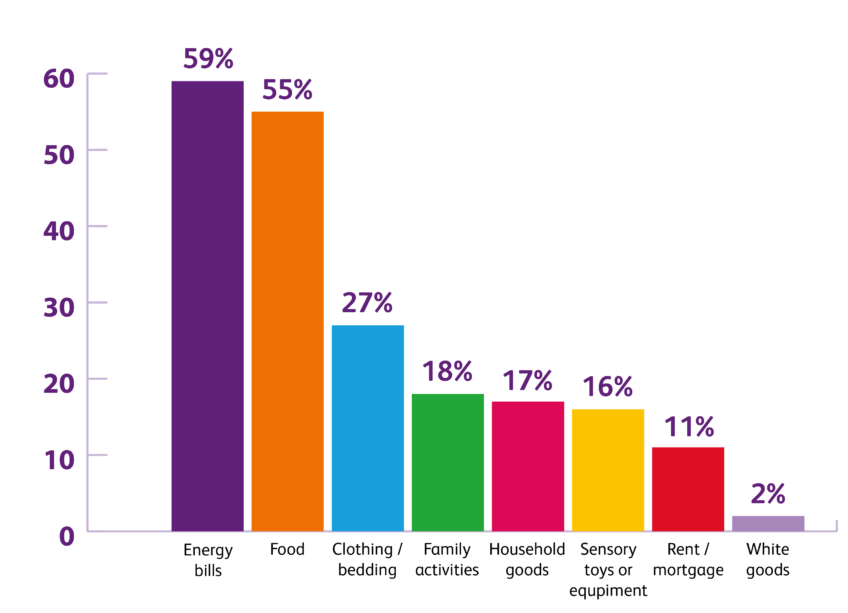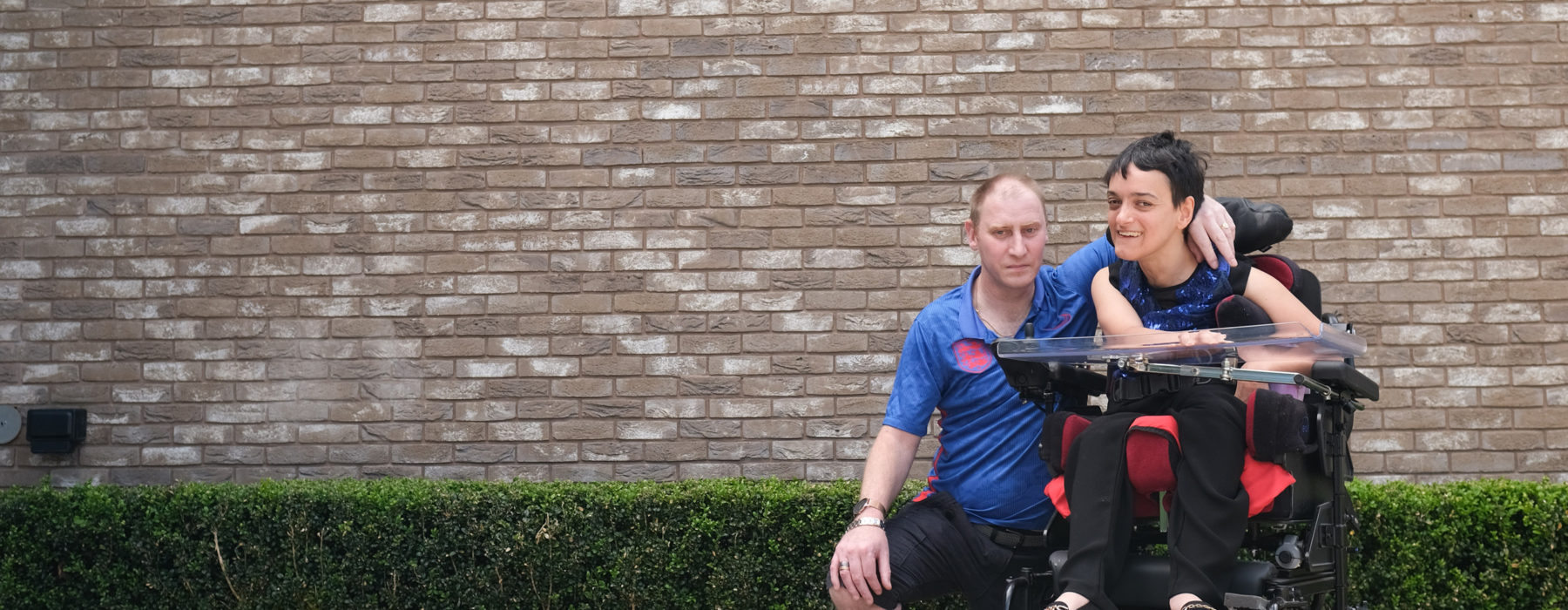What was the impact of our Cost of Living Support Fund?
Why did we launch the fund? What was our goal?
Disabled people are disproportionately affected by the cost of living crisis. We hear from people who cannot afford to repair essential medical equipment, do the laundry or buy fuel for trips to service or hospital appointments.
Our mission is to ensure that people who are deafblind or have complex disabilities are not left out of life. Our work addresses the most pressing challenges in people’s lives – whether in education, employment, or access to social care.
But we’ve increasingly heard from our community that the biggest challenge people are facing is financial.
By providing direct financial support to as many financially vulnerable families as possible, our goal was the same as always – to provide the best possible support for disabled people. In these urgent circumstances, a grant scheme was the best way to achieve that.
How did the grant work?
We established a set of eligibility criteria and required applicants to receive a referral from a professional in social care.
We then worked with a partner charity with experience in similar fund programmes, Turn2Us, to review the applications and issue payments.
We issued 2 grants. One was sent out in July, August and September 2022 and another one in March 2023. The funding in March 2023 was accessible to those who previously had received support from the fund.
What did people use the money for?
In 2022, the majority of recipients needed the money for energy bills (59%) and food (55%).
By March 2023, a higher number (76%) used the money for energy bills and 66% used the money for food.

What did we learn about the cost of living crisis?
People need more support
Recipients of the fund remain worried in 2023 about the rising cost of living. In 2023, 91% were concerned about food prices and 89% were concerned about energy costs highlighting the impact that the increasing cost of essentials are having.
Findings from our evaluation found that those who accessed the fund wanted further support. The most popular options were more financial support for carers (74%), more financial support to help pay for energy bills (67%) and improved benefits (65%)
There is no creative solution here. People are asking for more financial support.
Government and the third sector must step up and provide as much support as they can.
We cannot hide away from discussing the cost of living crisis
Talking about finances can be difficult. However, our staff found that this grant scheme enabled these conversations.
One of the professionals who referred a family to the fund explained: “It gave me a better insight into the families we support, particularly the financial challenges they face as parents of children with disabilities”.
As a result of this project, we have strengthened our information and advice resources, and included links to grants and benefits available from other organisations.
Asking for help is something most families who struggle would rather avoid, but the reality is that without it, we’d be drowning in debt.
Recipient of the cost of living fund
What next?
Campaigning for a stronger support system
77% of disabled people don’t know how they’ll cope if prices continue to rise.
While we hope this fund gives families some desperately needed support, we know it isn’t a solution to the wider problem. Government must do more to protect people facing financial hardship – our petition demanding they offer more support to disabled people now has over 60,000 signatures.
We’re asking for:
- A benefits system that meets disabled people’s needs.
- More financial support to cope with higher energy costs.
- Targeted support for disabled children and their families.
Evaluating the grants
The 2022 Cost of Living Support Fund evaluation
Evaluating who we helped and how the grant made a difference.
The 2023 Cost of Living Support Fund evaluation
Evaluating where recipients were located, how they found the application process and how worried they are about the rising cost of living.

